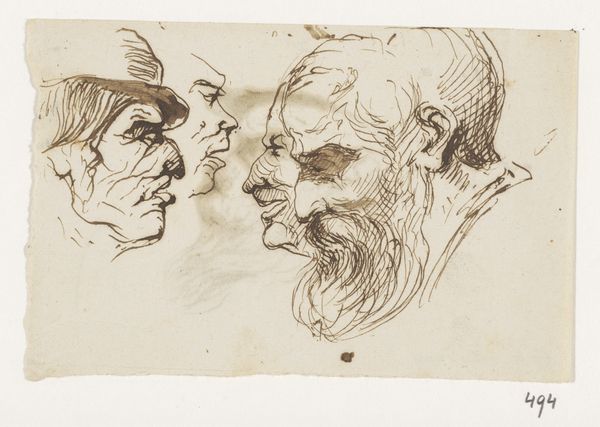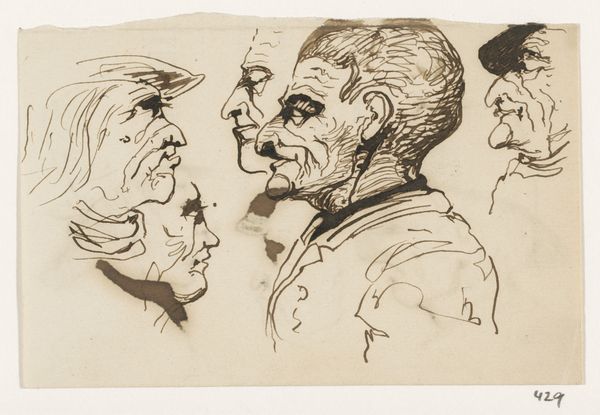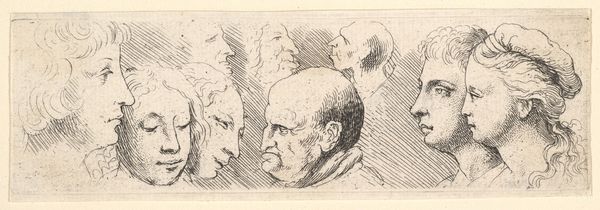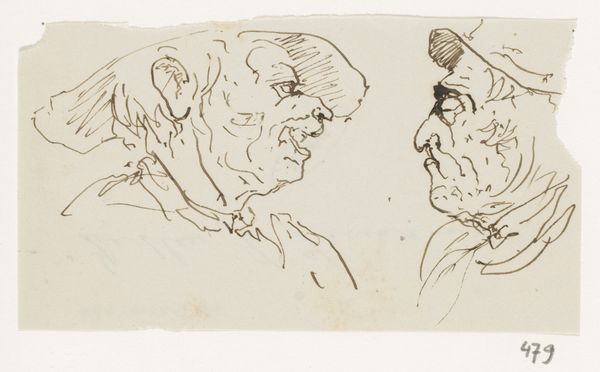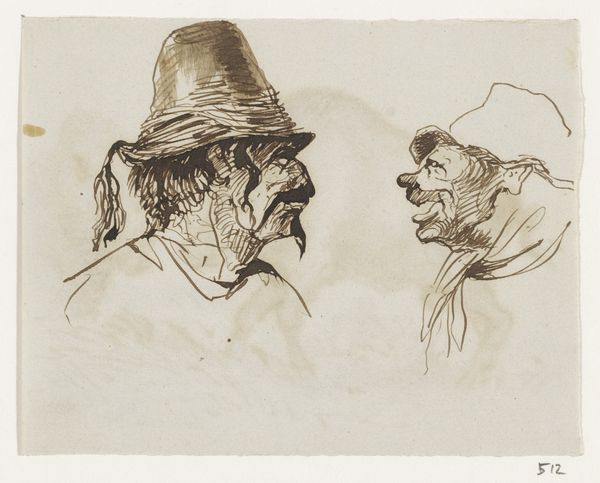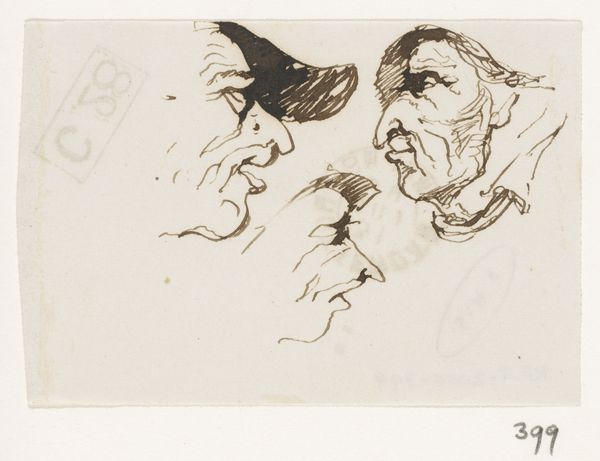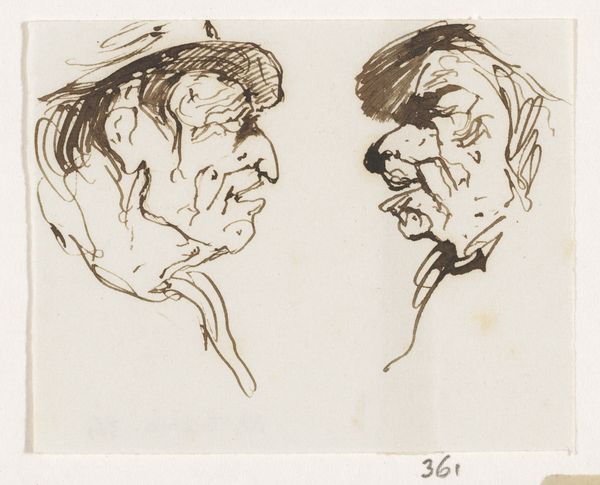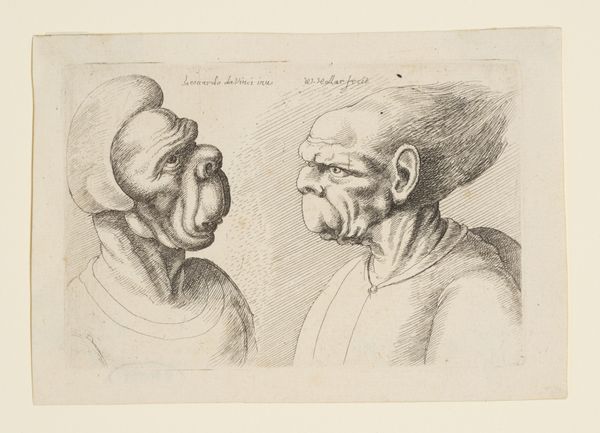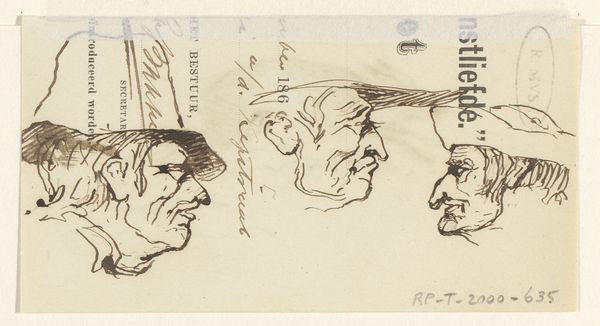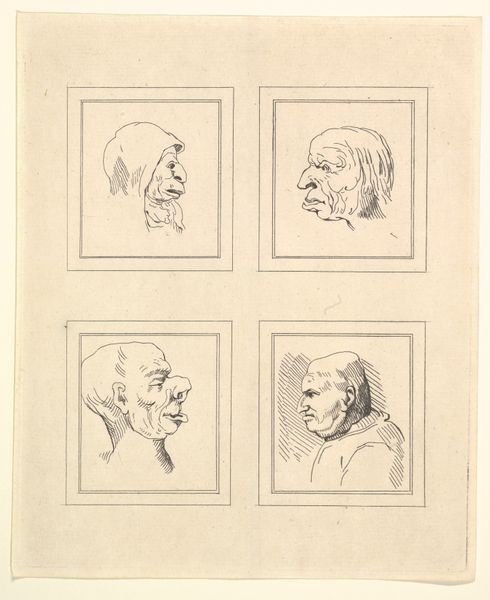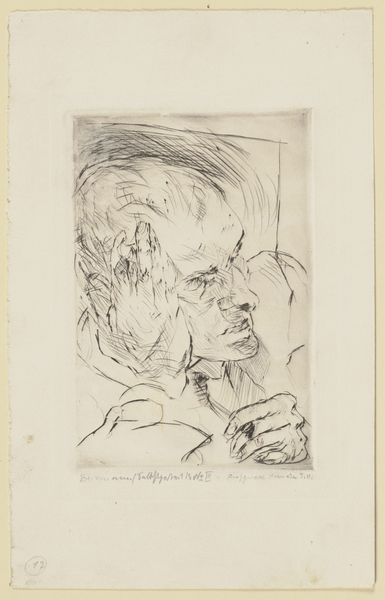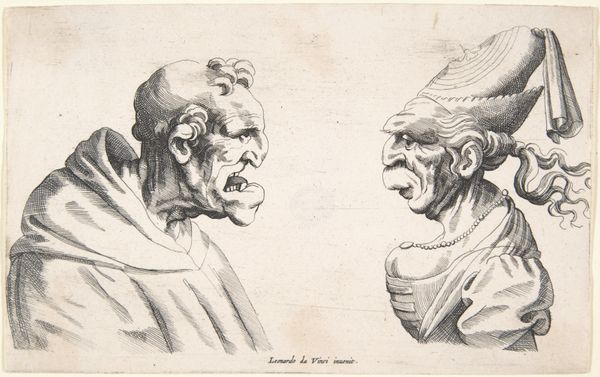
drawing, print, engraving
#
portrait
#
drawing
#
baroque
# print
#
caricature
#
caricature
#
portrait drawing
#
engraving
Dimensions: Sheet: 4 5/8 × 2 15/16 in. (11.7 × 7.5 cm)
Copyright: Public Domain
Curator: This intriguing print, titled "Two Deformed Heads Facing Inwards", was created in 1645 by Wenceslaus Hollar. It's currently part of the Metropolitan Museum of Art's collection. Editor: My first impression? Stark and unsettling. The detailed cross-hatching gives such a tactile quality to these exaggerated features. There’s a weight to it; the material processes highlight these men. Curator: Absolutely. Hollar, known for his detailed engravings, captures a moment that could be interpreted in various ways when seen through the lens of power dynamics and marginalization during the Baroque period. Are these caricatures mocking or sympathetic? Editor: Mocking, I think, is too simple an answer. Considering the labor and material investment inherent in engraving, does the medium itself elevate the subjects, even in their "deformity"? The act of painstaking reproduction, in this form, feels charged. Curator: Precisely. Think about the circulation of these prints, too. Were they used for political satire, moral instruction, or simply amusement? It's fascinating to consider how such images might have reinforced existing social hierarchies, or perhaps subverted them through the very act of depiction. It almost reads like a critical commentary. Editor: Or an interrogation of physiognomy of the era – a pseudo-science which then tied external appearance to internal character, further shaping social assumptions. Hollar’s process and distribution played directly into the production and reinforcement of belief systems that materialized at all levels. The level of production for something designed to, perhaps, 'punch down,' says a great deal. Curator: Yes! The grotesque and the exaggerated became powerful tools, whether used to satirize the elite, reinforce social norms, or perhaps, even question them. Each man embodies some larger than life truth – almost mythical – due to Hollar’s commitment. Editor: These weren’t mere sketches dashed off; each mark represents deliberate artistic labor to the circulation of sometimes divisive rhetoric. Something important to recall, when engaging with an artist of any period. Curator: Understanding that creative and production cycle allows us to challenge and consider contemporary resonance, too. What biases still lurk in the choices that artists, and indeed we all make? Editor: I completely agree. Engaging with the "how" reveals so much about "why," and perhaps, what's truly at stake.
Comments
No comments
Be the first to comment and join the conversation on the ultimate creative platform.
